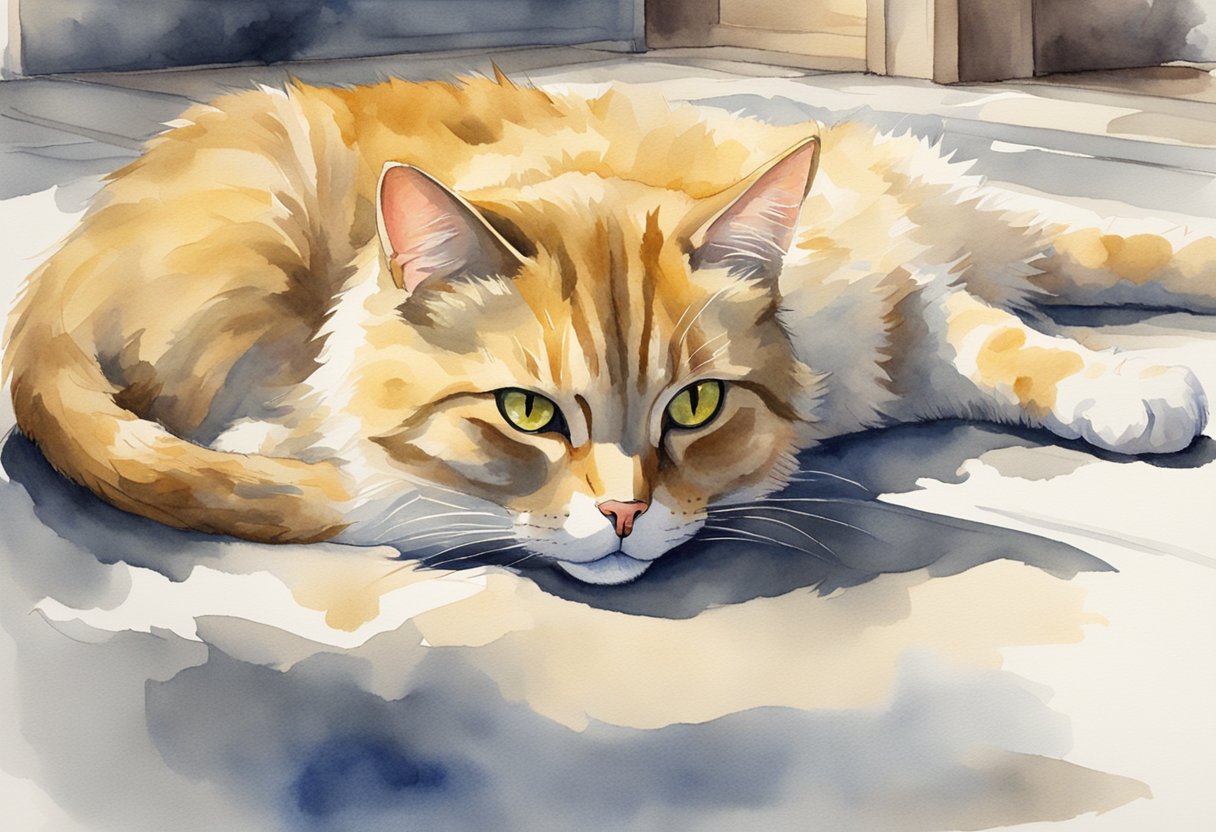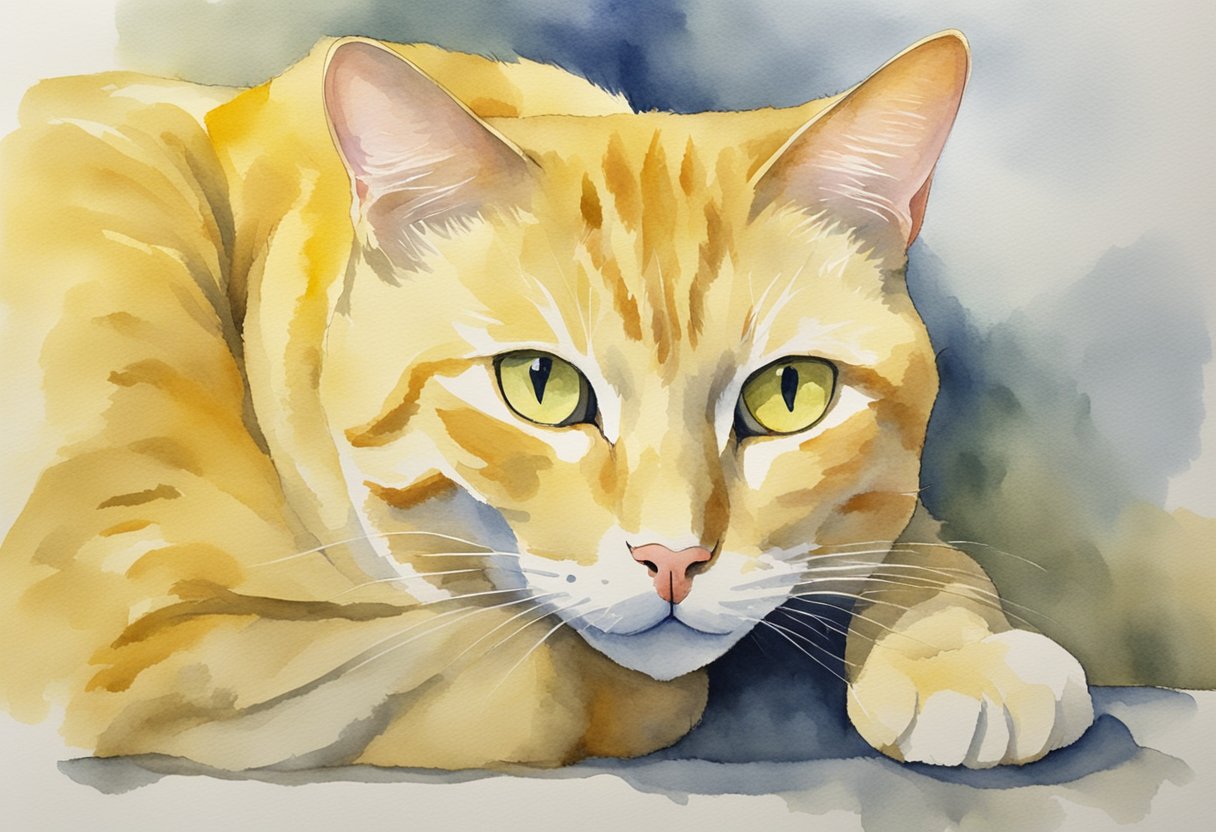Jaundice can indeed be life-threatening for cats if the underlying condition isn’t addressed promptly. Imagine noticing your cat’s once bright eyes turning a shade of yellow, or their pink gums now tainted with a yellowish hue; it’s more than just a cosmetic concern.
Known medically as icterus, jaundice itself isn’t a disease but a sign that your cat’s body is facing something more serious—like liver issues, problems with the gallbladder, or a breakdown of red blood cells.

When you see yellowing in the barely-there fur of their ears or the skin around their eyes, it’s your cue to consult a vet, stat. Vets are skilled at pinpointing whether the cause is pre-hepatic, related directly to the liver (hepatic), or post-hepatic, which could mean issues with bile flow or even pancreatitis.
It’s a multifaceted sign that points to various possible health conditions, each with its own level of severity and specific treatment approach.
The experience can be quite alarming—you’re not just caring for a pet; you’re caring for a family member. Being informed is your first line of defense. Early detection and treatment can make a significant difference, and understanding the potential severity of jaundice will help you take swift action.
Identifying Jaundice in Cats
When your feline friend starts showing unusual color changes, it could be a sign of jaundice, which requires your immediate attention. This condition is not merely cosmetic; it indicates that something is affecting your cat’s health.
Physical Signs of Jaundice
Detecting jaundice in your cat involves observing specific physical changes. The most apparent signs will be a yellowish hue in the:
- Skin
- Eyes: particularly the whites
- Gums
- Ear flaps
- Foot pads

Cats with lighter fur may show these signs more clearly, but even dark-furred felines may exhibit yellowing in the mentioned areas.
Behavioral Symptoms
Keep an eye out for changes in behavior, which often accompany jaundice. Cats may exhibit:
- Decreased appetite or complete loss of appetite
- Lethargy or a significant drop in energy levels
- Weight loss, potentially rapid and concerning
- Vomiting, diarrhea, or changes in drinking and urination patterns
Your normally playful and curious cat might seem withdrawn and listless if they’re feeling unwell due to underlying issues associated with jaundice.
Diagnostic Procedures
When you notice these symptoms, a veterinarian will perform a physical exam and likely recommend diagnostics that may include:
- Complete blood count (CBC)
- Blood tests to measure levels of bilirubin
- Urinalysis to check the function of the liver and kidneys
- Imaging tests, such as ultrasound or x-rays
- In some cases, a liver biopsy might be necessary
These tests aim to assess liver function, look for red blood cell issues leading to anemia, and measure the bilirubin accumulation.
Related Health Conditions
Jaundice is a symptom, not a disease itself. It’s an indicator of various health conditions affecting the liver, red blood cells, or both. Possible underlying causes include:
- Liver diseases such as feline leukemia virus (FeLV), feline immunodeficiency virus (FIV), or feline infectious peritonitis (FIP)
- Cholangitis (inflammation of the bile duct)
- Infections, liver flukes, or other inflammatory conditions
- Cancer or hemolysis (breakdown of red blood cells)
Understanding the Causes of Feline Jaundice
When your cat shows signs of jaundice—noticeably yellowing of the skin, whites of the eyes, or gums—it often points to an underlying health issue that needs immediate attention.
Jaundice itself is not a disease but a symptom that arises when there’s an increase in bilirubin in the blood, due to various potential health problems.
Liver Disorders
Liver Disease: One of the most frequent culprits of jaundice in cats is liver disease, where the liver’s ability to process bilirubin is impaired. Diseases like hepatic lipidosis (fatty liver disease) can lead to liver failure if not treated promptly. Elevated liver enzymes in blood tests often reveal liver dysfunction.
Cholangiohepatitis: This is inflammation of the bile duct and associated liver tissues, contributing to jaundice by affecting the liver’s ability to handle bile properly.
Blood and Circulatory Issues
Hemolysis: The destruction of red blood cells, medically termed hemolysis, leads to anemia and an overproduction of bilirubin. This could be due to parasites like Mycoplasma haemofelis transmitted by ticks or other causes.
Blood Clotting Disorders: When clotting is compromised, it can cause internal bleeding, leading to increased turnover of red blood cells and subsequent jaundice.
Obstructive Jaundice
Bile Duct Obstruction: Obstructions in the bile duct, such as gallstones or tumors, prevent bile from flowing normally, causing bilirubin to build up in the blood. This mechanical obstruction is a direct cause leading to the yellow discoloration of jaundice.
Pancreatitis: Inflammation of the pancreas can also lead to bile duct obstruction, as the pancreas and bile duct are closely linked in the anatomy of cats, which can indirectly cause jaundice.
Infectious Diseases
Feline Leukemia Virus (FeLV) and Feline Immunodeficiency Virus (FIV): These serious viral infections can directly affect the immune system and are associated with liver diseases that can cause jaundice.
Feline Infectious Peritonitis (FIP): A somewhat less common, but often fatal, infectious disease that can also lead to jaundice as one of its clinical signs.
By understanding these underlying causes, you’re better equipped to spot the signs early and seek veterinary care for your fur friend. Dealing with liver issues, infectious diseases, or complications from hemolysis can be daunting, but supporting your cat starts with noticing these changes in their body and behavior.
Treatment and Management of Jaundice
When your cat is diagnosed with jaundice, it typically signifies an underlying condition that urgently needs to be addressed.
Treatment and management strategies are critical in promoting your cat’s recovery and often involve a mix of medical interventions, dietary adjustments, and perhaps surgical options depending on the cause.
Medical Interventions
Your veterinarian will evaluate your cat to identify the underlying cause of jaundice, which may include liver disease or hemolysis. Based on the diagnosis, they may prescribe medications such as antibiotics, anti-inflammatories, or vitamin K to treat accompanying symptoms like vomiting or to promote liver function. In severe cases, blood transfusions or intravenous fluids may be necessary, especially if your cat is experiencing significant liver failure or dehydration.
- Medications: Antibiotics, Anti-inflammatories, Vitamin K
- Hospitalization: For severe dehydration or liver failure
Dietary and Lifestyle Adjustments
You’ll need to support your cat’s liver by providing a diet that’s easy on the body yet nourishing. This often involves feeding low-protein diets or special prescription food designed to minimize liver stress. Supplements to boost liver health can also be beneficial. Watch your cat’s eating habits closely; a decrease in appetite can signal progressing issues.
Nutritional Support:
- Prescription diets (low-protein, liver-supportive)
- Nutritional supplements for liver health
Surgical Options
If your cat needs a biopsy to diagnose the exact cause of jaundice or to address liver obstructions, surgery might be necessary. It’s a more invasive approach, but biopsies can provide crucial insights into your cat’s health and guide further treatment.
Keep in mind that surgery, including post-operative care, requires close monitoring and a recovery period.
Possible Surgical Interventions:
- Diagnostic biopsies
- Removal of gallbladder stones or tumors

My name is James, and welcome to FAQCats!
Along with our team of cat owners, expert pet enthusiasts, and pet professionals, we aim to write engaging helpful, engaging content about cats. At FAQCats we strive to provide content that’s accurate and fun to read. Our team writes about everything related to cats; even the most complex of topics. Through extensive research and caring for our own fur-pals, we’re able to provide something cat owners worldwide will love. Have a look around, and leave us feedback anytime!

